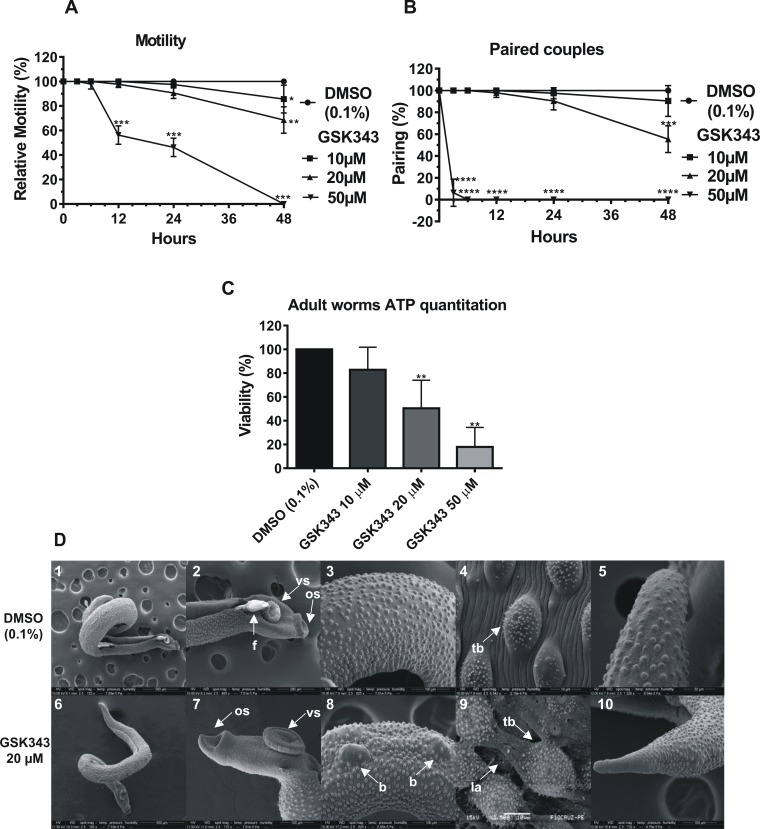Fig 1. In vitro effects of GSK343 on the motility, pairing, viability and ultrastructure of S. mansoni adult worms.
(A) Percentage of relative motility of adult worms treated with different concentrations of GSK343 and controls (0.1% DMSO) at different times of exposure from 3 to 48 h. Mean ± SD of three experiments, each with 10 worm pairs. (B) Monitoring the pairing of controls and treated couples with different concentrations of GSK343 at different times of exposure from 3 to 48 h. Mean ± SD of three experiments, each with 10 worm pairs. (C) Viability was estimated by the total amount of ATP available in the parasites, using a luminescent assay. Pairs of adult worms were treated for 48 h with GSK343 at the different concentrations indicated or with vehicle (0.1% DMSO). The viability was expressed as % the luminescence values relative to the control (DMSO). Mean ± SD from three replicate experiments, each with 10 worm pairs. For panels (A), (B) and (C): *p < 0.05, **p < 0.01, ***p < 0.001, ****p < 0.0001 compared with control. (D) Scanning electron microscopy of worms exposed for 48 h to 20 μM GSK343 (note that the size bar is shown within the black thin line below each image); panels 1 and 2: Male and female control (Bar = 500 μm; 200 μm) presenting the couple fully paired; panels 3 and 4: Medial dorsal region of the male presenting tegument without structural alterations (Bar = 100 μm; 10 μm); panel 5: Male posterior region without morphological alterations (Bar = 50 μm). panels 6 and 7: Adult worm treated with GSK343 and its anterior region (Bar = 500 μm; 100 μm); panels 8 and 9: Enlarged view of dorsal region of adult worm treated with GSK343 showing lesions of tegument around the tubercles; panel 10: Posterior region of male adult worm treated with GSK343 (Bar = 100 μm). f: female; os: oral sucker; vs: ventral sucker; b, blebs; tb: tubercles; la: lesion area.

